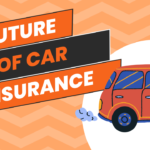Introduction
Car insurance is a critical aspect of vehicle ownership, offering financial protection against accidents, theft, and other unexpected events. While many people are familiar with the basics of car insurance, such as liability coverage and collision coverage, the field encompasses much more. This article delves into advanced topics in car insurance, providing a comprehensive understanding for those looking to deepen their knowledge.
Understanding Car Insurance Policies
Policy Components
A car insurance policy is a contract between the policyholder and the insurance company. It outlines the terms, conditions, coverage types, and limits. Understanding the intricacies of these components is essential for selecting the right policy. Key components include:
- Declarations Page: This summarizes the policyholder’s information, vehicle details, coverage types, and limits.
- Insuring Agreement: It defines what the insurance company will cover, including the scope of coverage.
- Exclusions: These are specific situations or circumstances not covered by the policy.
- Conditions: These outline the responsibilities of the policyholder and the insurer, including reporting claims and paying premiums.
Types of Coverage
Beyond the basic coverage options, there are several advanced coverage types to consider:
- Gap Insurance: This covers the difference between the car’s actual cash value and the remaining loan balance if the vehicle is totaled.
- Usage-Based Insurance (UBI): Premiums are based on the policyholder’s driving behavior, tracked through telematics devices.
- Non-Owner Car Insurance: Provides liability coverage for individuals who drive but do not own a car.
The Role of Actuarial Science in Car Insurance
Risk Assessment and Premium Calculation
Actuarial science plays a crucial role in the car insurance industry. Actuaries use statistical methods to assess risk and determine premium rates. Key factors include:
- Driver’s Age and Experience: Younger, less experienced drivers typically pose higher risks.
- Driving History: A record of accidents or traffic violations increases perceived risk.
- Vehicle Type: High-performance or expensive cars often cost more to insure.
- Geographic Location: Areas with high traffic density or crime rates can lead to higher premiums.
Predictive Modeling
Predictive modeling is an advanced actuarial tool used to forecast future claims based on historical data. Machine learning algorithms can identify patterns and trends, allowing insurers to adjust premiums dynamically.
Legal and Regulatory Considerations
State-Specific Regulations
Car insurance regulations vary significantly by state. Understanding these differences is crucial for compliance and optimal coverage. Key regulatory aspects include:
- Minimum Liability Requirements: Each state mandates minimum coverage limits for bodily injury and property damage liability.
- No-Fault vs. Tort Systems: Some states operate under a no-fault system, where each driver’s insurer covers their own losses, while others use a tort system, where the at-fault driver’s insurer pays for damages.
- Uninsured/Underinsured Motorist Coverage: Some states require this coverage to protect against drivers with insufficient insurance.
Impact of Regulatory Changes
Regulatory changes can significantly impact car insurance policies and premiums. For example, the introduction of autonomous vehicles has prompted discussions about new liability frameworks and insurance models.
Technological Innovations in Car Insurance
Telematics and Usage-Based Insurance
Telematics technology has revolutionized the car insurance industry. By installing telematics devices in vehicles, insurers can monitor driving behavior, including speed, braking, and mileage. This data enables usage-based insurance (UBI), which offers several benefits:
- Personalized Premiums: Safe drivers can receive lower premiums based on their driving habits.
- Real-Time Feedback: Drivers can receive immediate feedback to improve their driving behavior.
- Enhanced Claims Process: Telematics data can streamline the claims process by providing accurate accident information.
Autonomous Vehicles
The rise of autonomous vehicles presents new challenges and opportunities for car insurance. Key considerations include:
- Liability Shifts: As vehicles become more autonomous, liability may shift from drivers to manufacturers or software developers.
- Insurance Models: New insurance models may emerge, such as product liability coverage for manufacturers and data-driven policies for consumers.
- Risk Assessment: The reduced likelihood of human error in autonomous vehicles could lead to lower premiums, but new risks, such as cybersecurity threats, must be considered.
Economic and Market Dynamics
Competitive Landscape
The car insurance market is highly competitive, with numerous players vying for market share. Insurers differentiate themselves through pricing, customer service, and innovative products. Understanding market dynamics is crucial for consumers and industry professionals alike.
- Pricing Strategies: Insurers use various pricing strategies, such as bundling multiple policies and offering discounts for safe driving.
- Customer Retention: Retaining customers is vital for profitability. Insurers invest in customer service, loyalty programs, and personalized offerings.
- Digital Transformation: The shift to digital platforms has transformed the customer experience, enabling online quotes, policy management, and claims processing.
Impact of Economic Factors
Economic factors, such as inflation, unemployment, and interest rates, can influence car insurance premiums and industry profitability. For example:
- Inflation: Increases in repair and medical costs can lead to higher premiums.
- Unemployment: High unemployment rates may result in more uninsured drivers, impacting insurers’ risk exposure.
- Interest Rates: Low-interest rates can reduce investment income for insurers, potentially leading to higher premiums.
Future Trends and Innovations
Artificial Intelligence and Big Data
Artificial intelligence (AI) and big data are driving significant advancements in car insurance. Key applications include:
- Fraud Detection: AI algorithms can identify fraudulent claims by analyzing patterns and anomalies in data.
- Customer Experience: Chatbots and virtual assistants powered by AI can enhance customer service by providing instant support and personalized recommendations.
- Risk Assessment: Big data analytics can improve risk assessment by integrating various data sources, such as social media and weather patterns.
Climate Change and Environmental Factors
Climate change is impacting the car insurance industry in several ways:
- Increased Frequency of Natural Disasters: More frequent and severe weather events can lead to higher claims and premiums.
- Shift to Electric Vehicles: The growing popularity of electric vehicles presents new challenges, such as the need for specialized coverage and considerations for battery replacement costs.
- Sustainability Initiatives: Insurers are increasingly adopting sustainable practices, such as offering discounts for eco-friendly vehicles and investing in renewable energy projects.
Car insurance is a complex and evolving field, influenced by technological advancements, regulatory changes, and economic factors. By understanding the advanced topics discussed in this article, consumers and industry professionals can make informed decisions and navigate the future of car insurance with confidence. Whether it’s leveraging telematics for personalized premiums, adapting to the rise of autonomous vehicles, or addressing the impact of climate change, staying informed and proactive is key to maximizing the benefits of car insurance.

